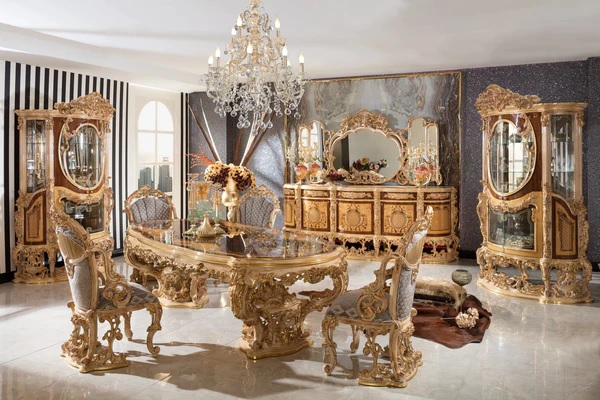Furniture is an essential part of our daily lives, and its design has gone through numerous changes over the centuries. From the earliest times, when it was purely functional, furniture has evolved into an art form, reflecting the social, economic, and cultural changes of each era. In this article, we will explore the history of furniture design and how it has developed over time.
Ancient Times

The earliest known furniture pieces were made by the ancient Egyptians and Greeks. These pieces were simple in design and were primarily constructed for practical purposes. Egyptian furniture was made from wood, while the Greeks used materials such as bronze and marble. Furniture during this time was often decorated with intricate carvings and designs.
The Middle Ages
During the Middle Ages, furniture design became more ornate and elaborate. The wealthy and noble classes commissioned furniture makers to create lavish pieces that were often decorated with gold leaf, ivory, and other precious materials. Gothic architecture also influenced furniture design during this era with its pointed arches and intricate carvings.
The Renaissance
The Renaissance marked a significant shift in furniture design. Artists and craftsmen began to focus on creating furniture that was not only functional but also beautiful. The use of intricate carvings, inlay work, and marquetry became more prevalent during this time. The Renaissance also saw the emergence of new furniture styles such as the Baroque and Rococo.
The Industrial Revolution
The Industrial Revolution brought about significant changes in furniture design. Mass production techniques allowed furniture to be produced quickly and cheaply, making it more affordable for the working class. The use of new materials such as iron and steel also influenced furniture design during this time.
The Modern Era
The 20th century marked a significant shift in furniture design. The focus was on creating furniture that was functional, comfortable, and aesthetically pleasing. The emergence of new materials such as plastic and fiberglass allowed for the creation of new furniture styles such as the Eames chair. The modern era also saw the emergence of minimalist and contemporary furniture designs.
The history of furniture design is a reflection of the social, economic, and cultural changes of each era. From the simple, functional designs of ancient times to the ornate and elaborate pieces of the Middle Ages, furniture has always been an important part of human culture. The Industrial Revolution and the modern era brought about significant changes in furniture design, making it more affordable and accessible to people from all walks of life. Today, furniture design continues to evolve, reflecting the current trends and preferences of consumers.













Comments